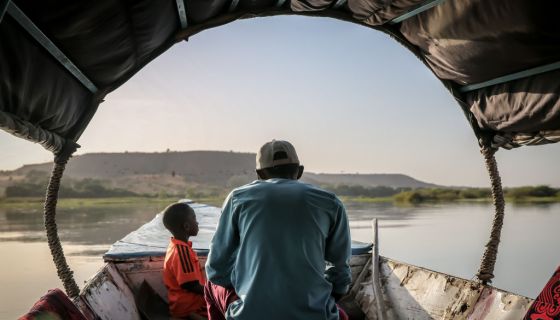Issouf Sanogo/AFP/GettyImages
Niger, a landlocked country in the dry Sahel region of Africa, struggles to feed its 25 million people. It currently ranks 115th out of 121 countries on the Global Hunger Index, and the number of people not getting enough to eat has increased from about 13% of the population in 2014 to 20% in 2022.
Things could deteriorate even further as Niger confronts a “perfect storm.” The country has one of the highest population growth rates in the world, with few signs of slowing down. Its fertility rate – at an average of seven children per women – is the highest in the world.
Added to this, most of the country is infertile. Two-thirds of its area is located in the Sahara desert. Most of the country’s agricultural land lies in a narrow band close to the Nigerian border in the south and is being encroached on by the desert.
Niger’s population also has among the lowest human capital indexes, which among other things mean people cannot earn enough to afford to buy food. This challenge is even greater given the recent shift in budgetary priorities away from social development and towards national security due to growing instability in the Sahel region.
To make matters worse, Niger is one of the regions most vulnerable to climate change. It has high exposure to heat and a low ability to adapt to changes in climate, like increasingly unpredictable rainfall. This will negatively affect crop yields in a country where less than 1% of the cultivated land is irrigated.

Janie Barrett/The Sydney Morning Herald/Fairfax Media via Getty Images
It’s projected that an additional two million Nigeriens will be pushed into undernourishment by 2050 by the effects of climate change on crop yields and because agricultural workers (around 75% of the total employed population) will struggle to work in the…
Read the full article here



